Just a quick update on progress on the Cavalier...
I wanted to use the car in the upcoming McLaren Vale Vintage & Classic show as my Triumph 2500 currently has no engine. However, with a 90km round trip to get there and back I was keen to make sure my chances of doing it without a spell on the back of an RAA truck were as high as possible.
The previous owner had mentioned that he hadn't had the timing belt changed during his ownership. Depending on what you read, the 18E engine is either non-interference or has sacrificial rockers to take the brunt of a broken belt but seeing as its such an easy job on these engines it seemed like a no-brainer to swap it over for a new one. The water pump was also making funny noises so that would kill at least two birds with the one stone.
It was definitely worth doing the job - whipping off the timing belt cover revealed a Gates belt which was definitely showing its age:
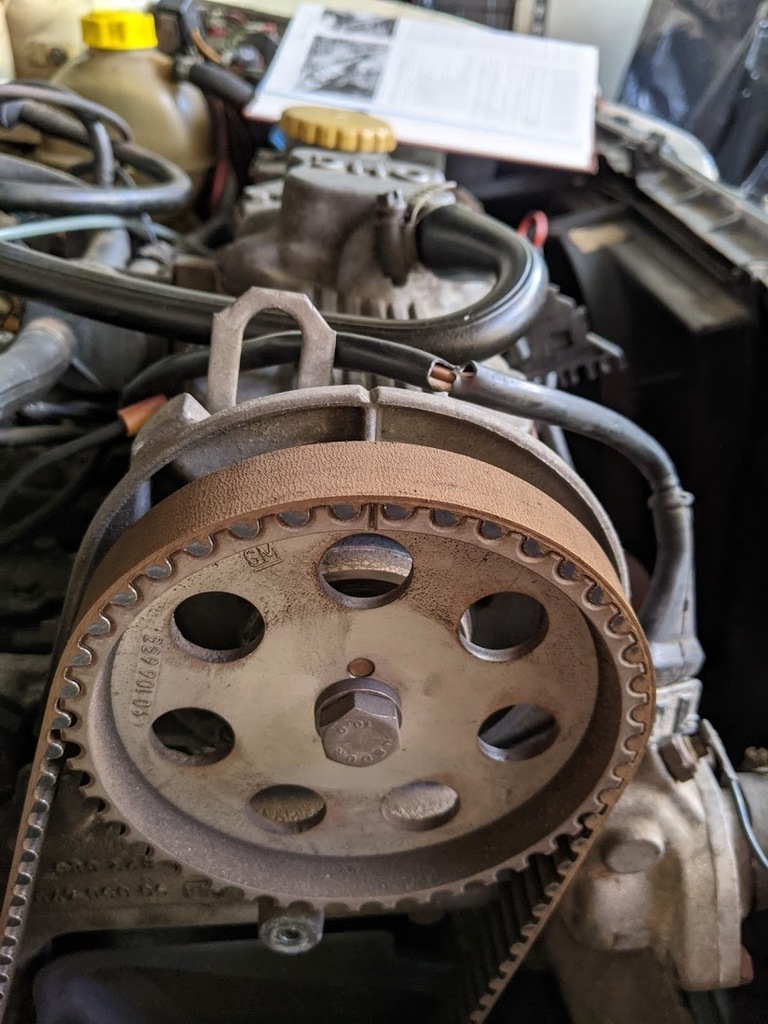
I'm not really sure where all of the brown dust has come from - whether this is just from being used in dusty Aussie conditions, or whether it is rust thrown up from somewhere. The water pump pulley sported some rust of the same shade so perhaps this was the culprit?
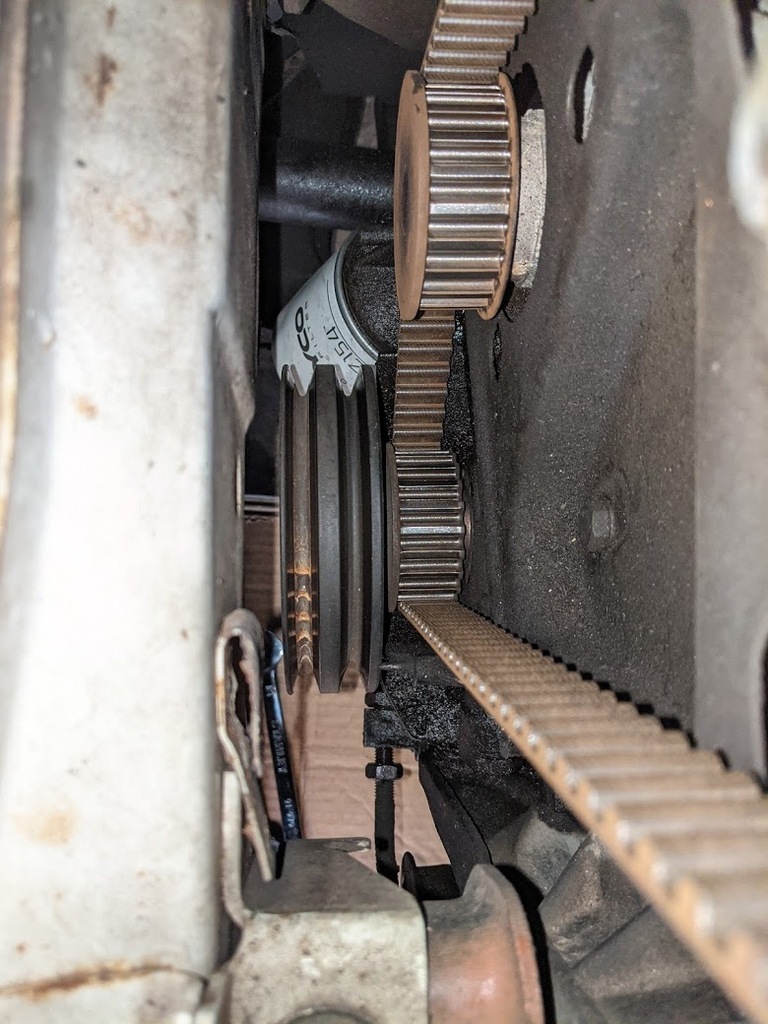
Either way it was all coming off so it didn't really matter.
The belt's really easy to remove - after removing the alternator and power steering belts and rotating the engine so that the timing marks on the crank and cam pulleys matched their corresponding marks on the block, I loosened the three bolts holding the water pump to the block and tapped the pump round with a hammer and long drift to remove tension from the belt. I then removed the timing belt's back plate and levered the pump from the block to reveal a bit of a ghastly mess:
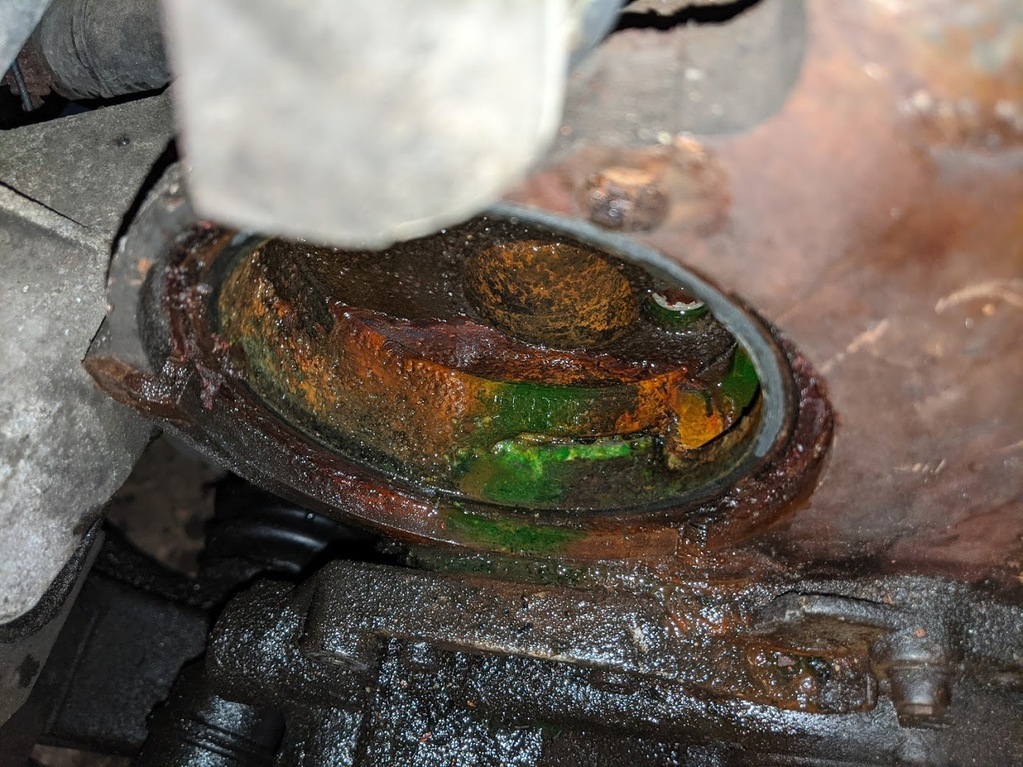
Here's the old pump compared to the new one. It has definitely done its duty and is ready for retirement:
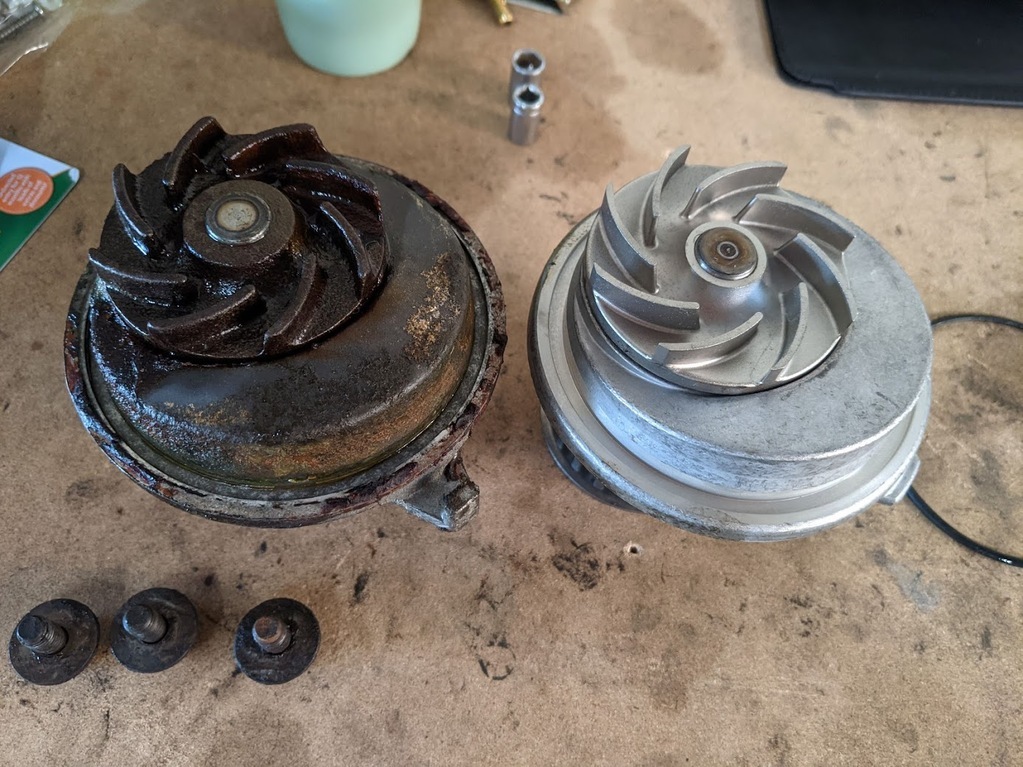
As had the old belt which whilst not shredded was showing signs of surface cracking:
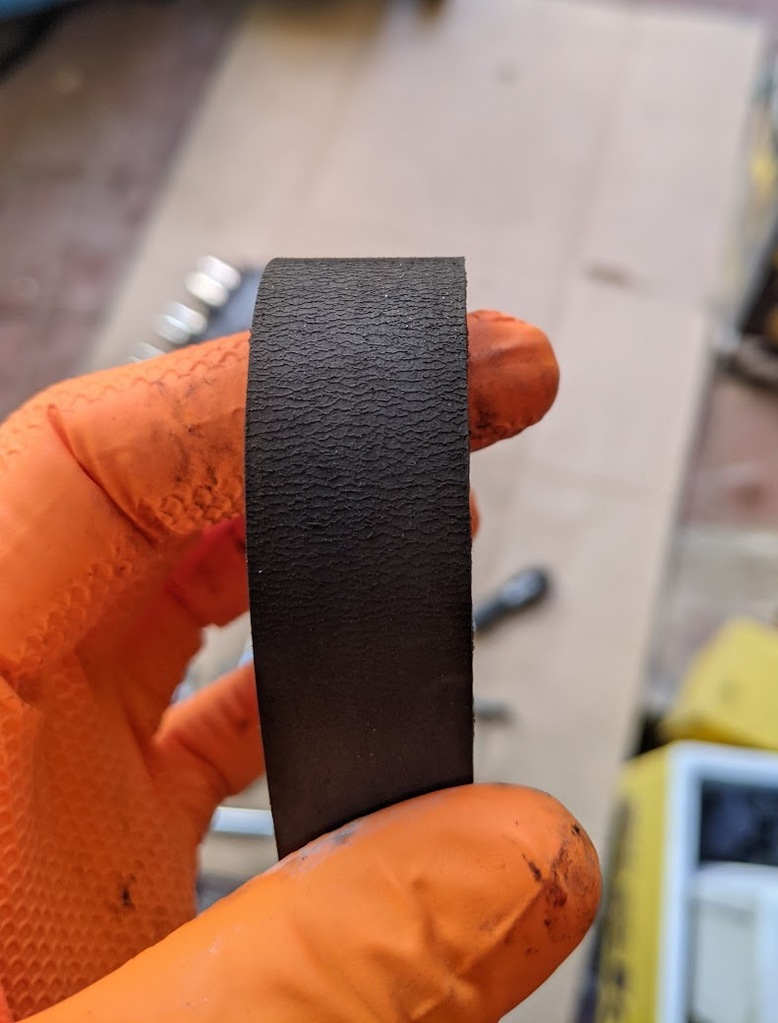
The pump is sealed with a simple rubber o-ring so the mating surface on the block needs to be as clean as possible to avoid leaks. I cleaned mine up as best as possible:
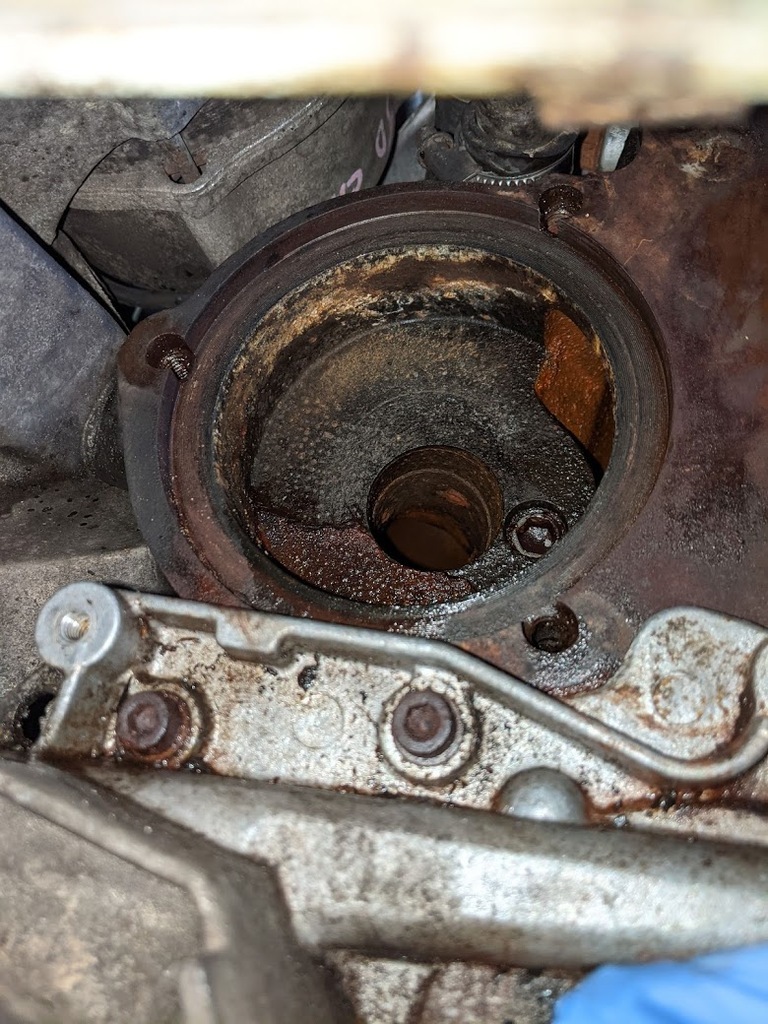
As the belt is tensioned by rotating the water pump with its eccentric pulley, I gave the o-ring a liberal dose of silicone grease to aid the process (I didn't want to use anything petroleum-based which would eat the rubber). The pump is genuine NOS GM by the way - I've had some bad experiences with aftermarket ones:
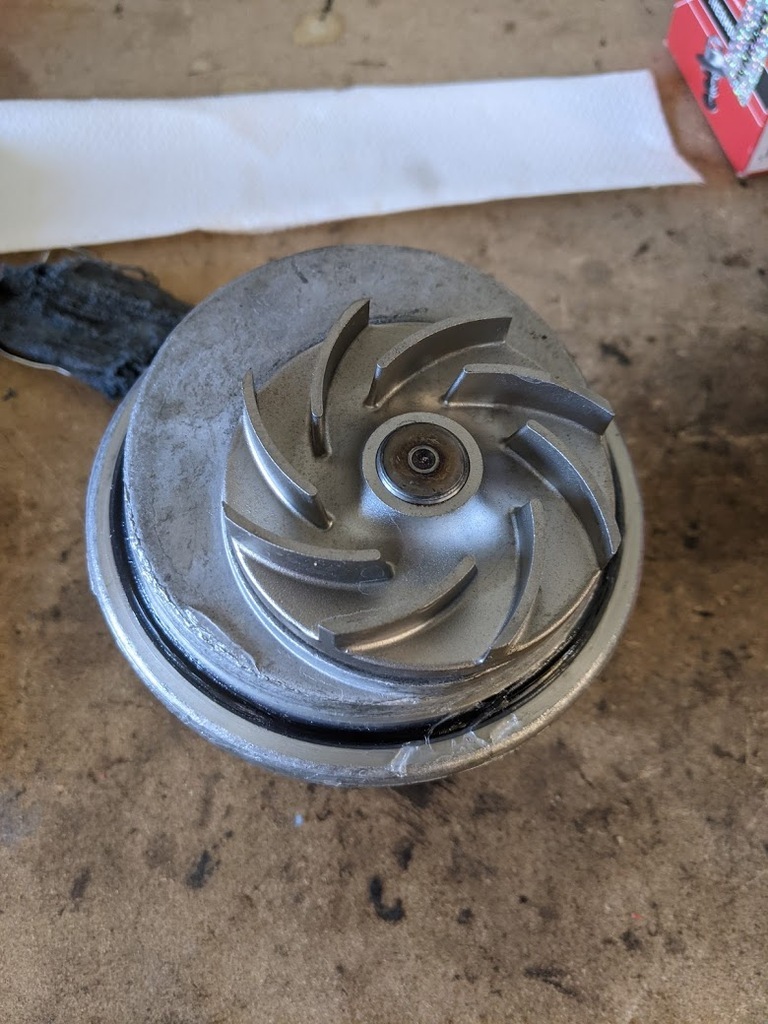
Once the pump is loosely held in place with its mounting bolts the timing belt back plate can be replaced - but before doing this I gave everything a good clean-up in this area as it was all caked in old oil. The engine definitely has some leaks so starting from a clean slate should at least help me track them down:
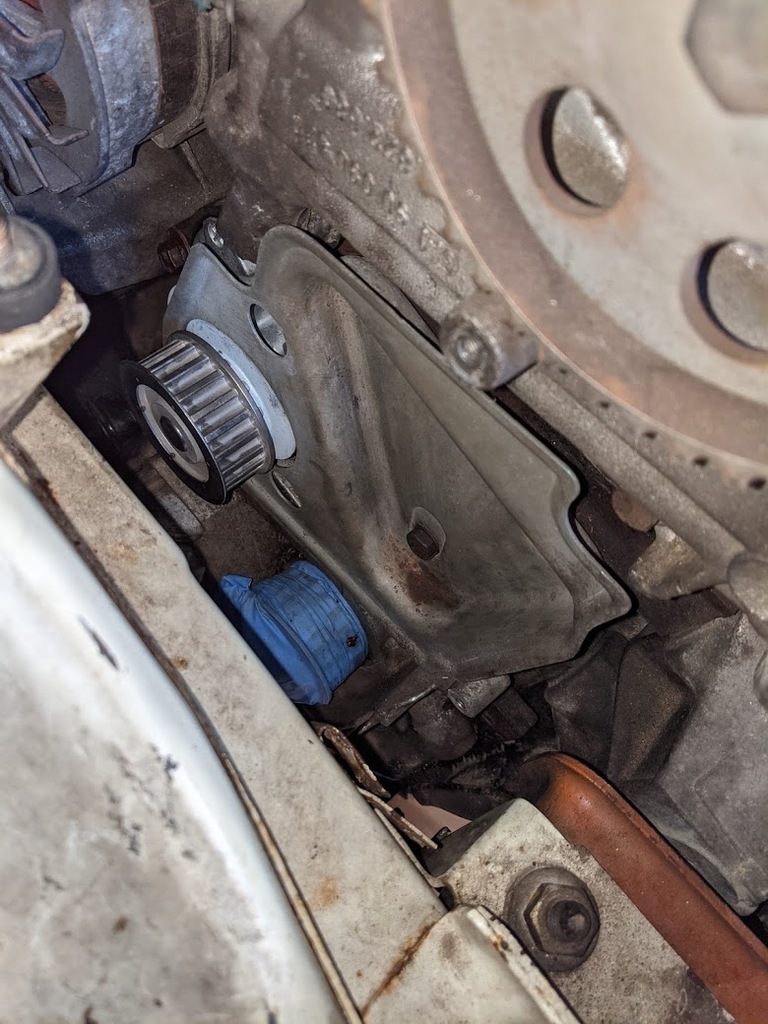
Ensuring the timing marks hadn't been disturbed, I fitted the new belt and tensioned it via the water pump until it could just be turned 90 degrees along its longest length with moderate force. Once I felt the tension was about right I torqued up the water pump bolts as per Mr Haynes' specifications:
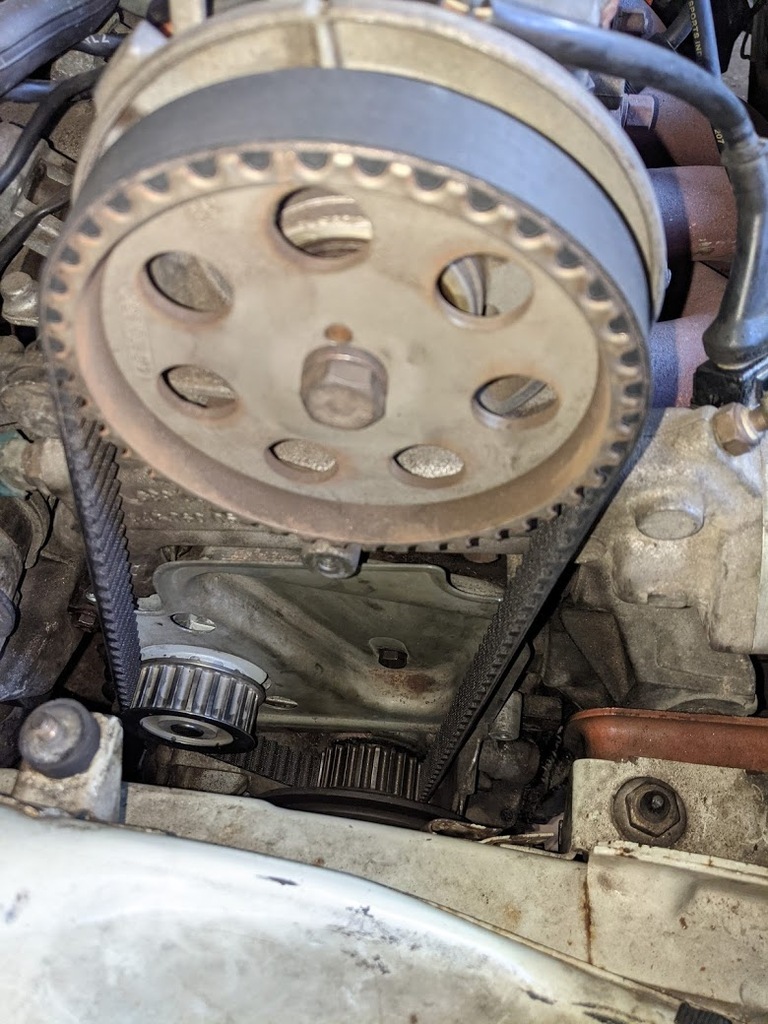
With the belt fitted, the engine then needs to be rotated three times by hand via the crank pulley to ensure the timing marks still line up and that the tension is still correct. In the end I actually had to reduce the tension after road testing as once the car had warmed up the new belt was howling a little. Backing it off slightly worked a treat and it now runs nice and quietly.
With a long run ahead I also turned my attention to the cooling system which had definitely seen better days. I'm not sure where the existing radiator was sourced from but it was definitely not a Cavalier one and from what I have seen in breakers yards doesn't seem to be from a Holden Camira either. Regardless of provenance, it was leaking, crumbling and generally horrible:
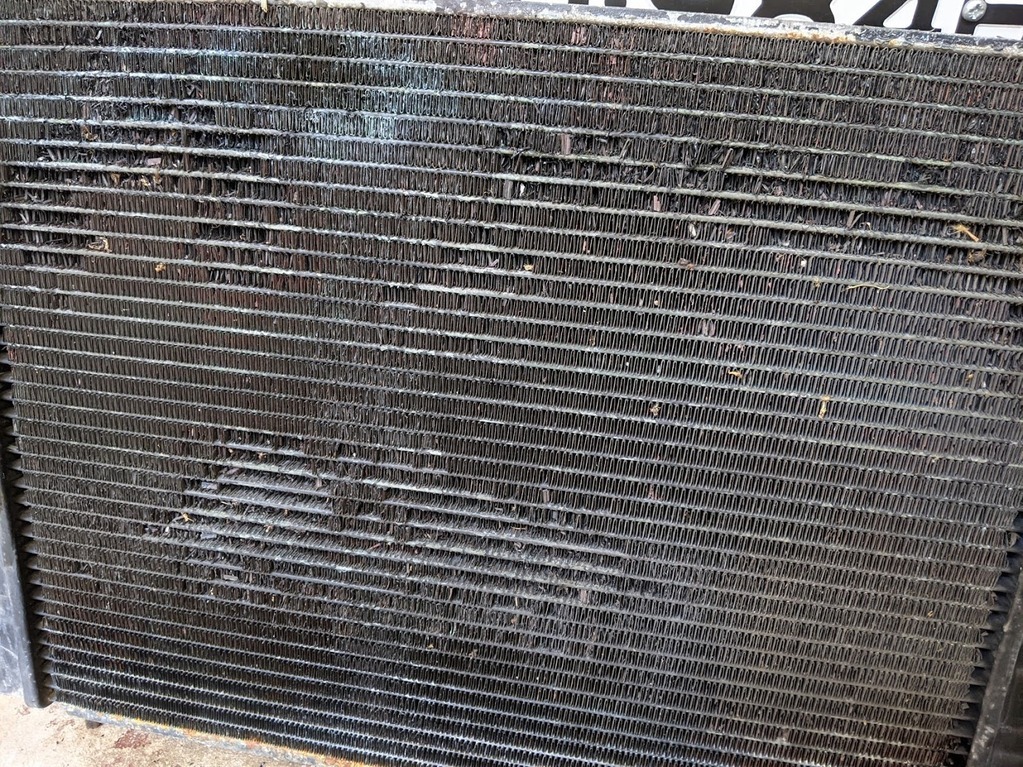
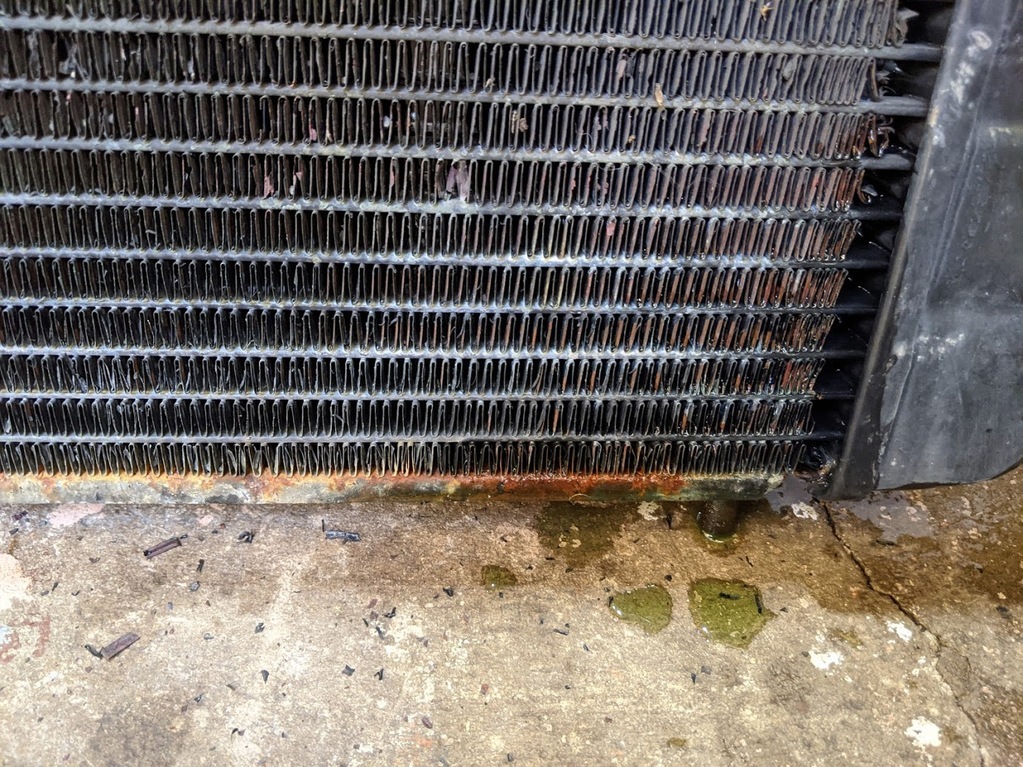
It also didn't really fit the space available in the car - the slam panel radiator mounts had been crudely bent out of the way to accommodate it and it was held in place only by the cooling hoses and an off-cut of heater hose wedged between its upper edge and the slam panel:
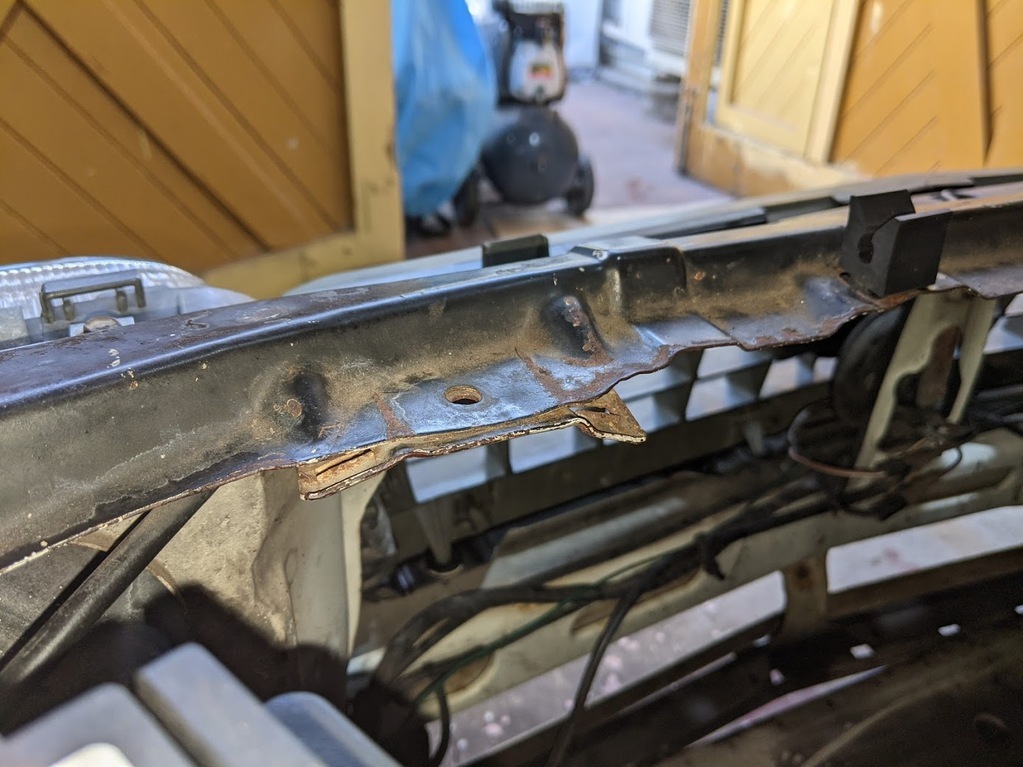
The new one looks much healthier:
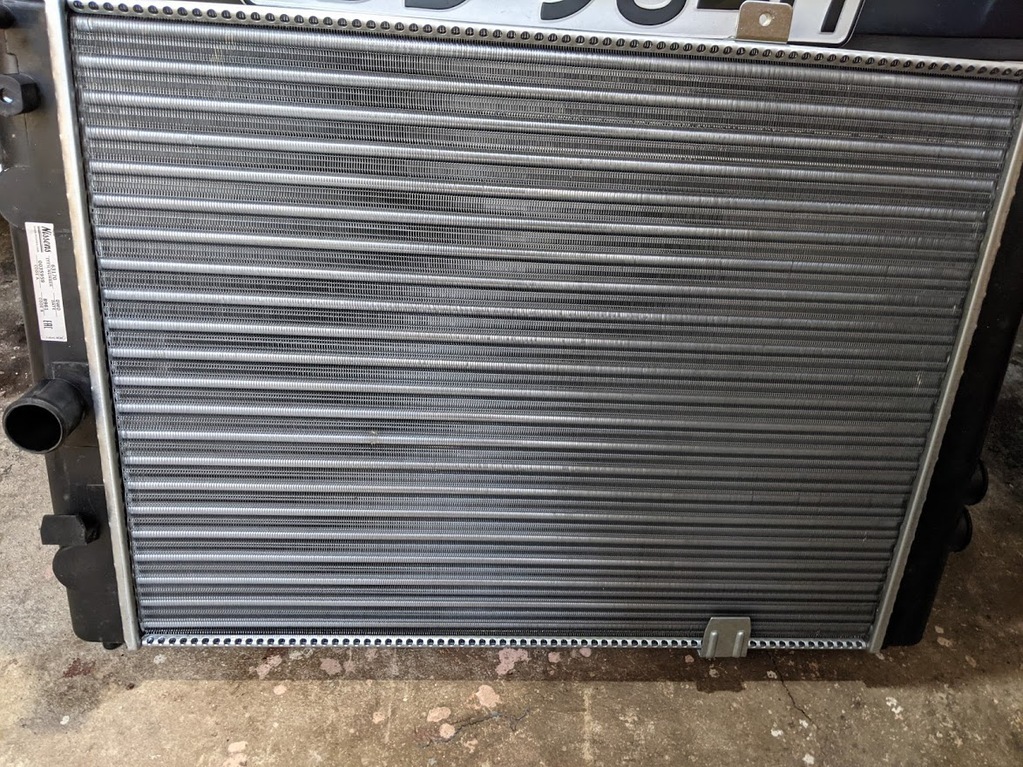
Before fitting the radiator I installed a correct NOS GM fan temperature switch to replace the external fan controller that had presumably been fitted at the same time as the non-standard radiator:
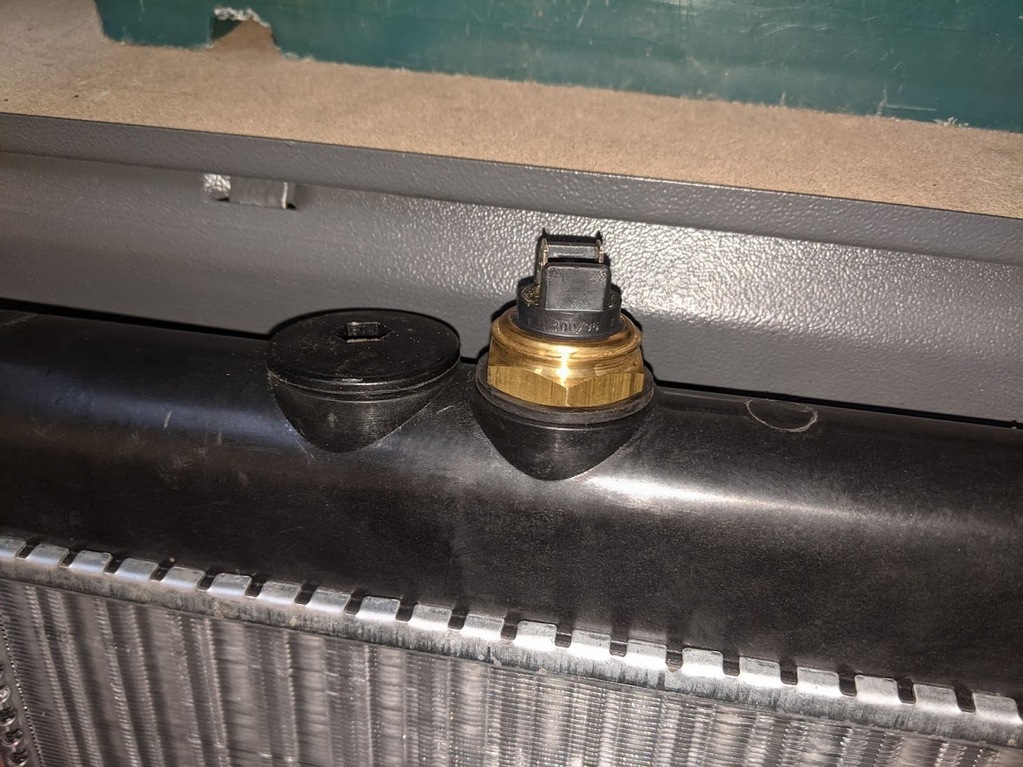
It was nice to wave goodbye to this manky slam panel addition:
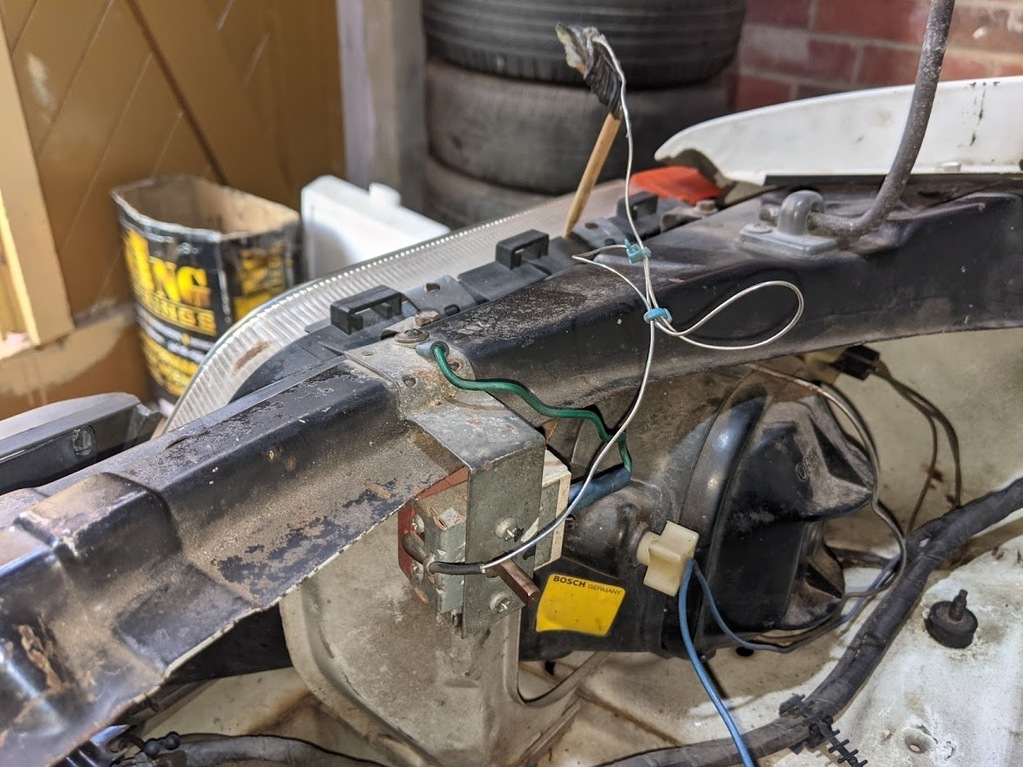
I fished out my newly procured set of mounting hardware...

...carefully bent the slam panel mounts back as best as I could...

...and gave the area a clean up to remove the oil and debris that had accumulated over the years:
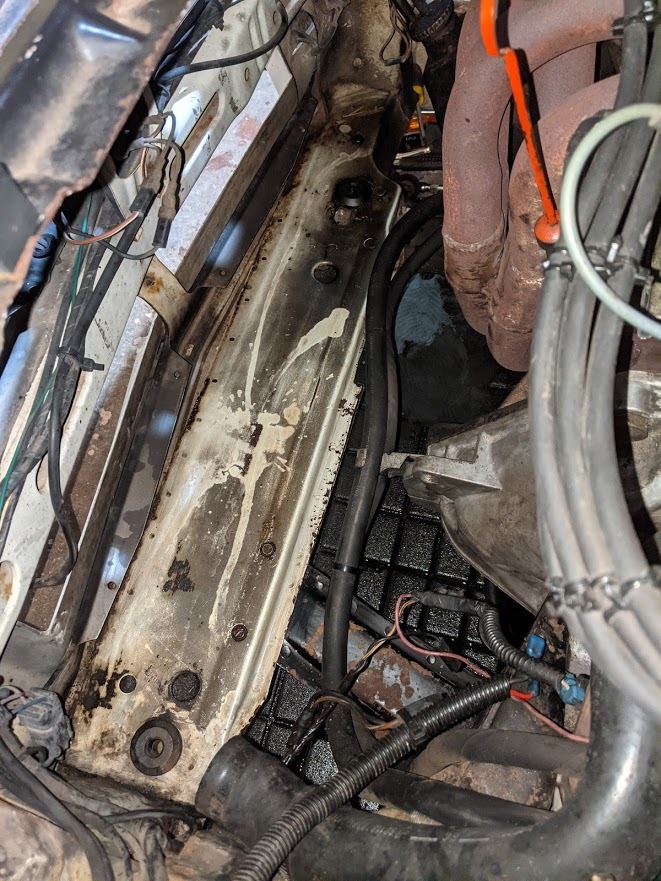
The new radiator fits well but weirdly the fan shroud only lines up with two of its three mounting points - despite both showing part numbers that are apparently correct for the car. I am not quite sure if this is a case of one of the parts being from a slightly different model or, less likely, a manufacturing problem with the radiator, but a couple of cable ties has it secure enough for now and I might knock up a small bracket at some point as a more permanent solution:
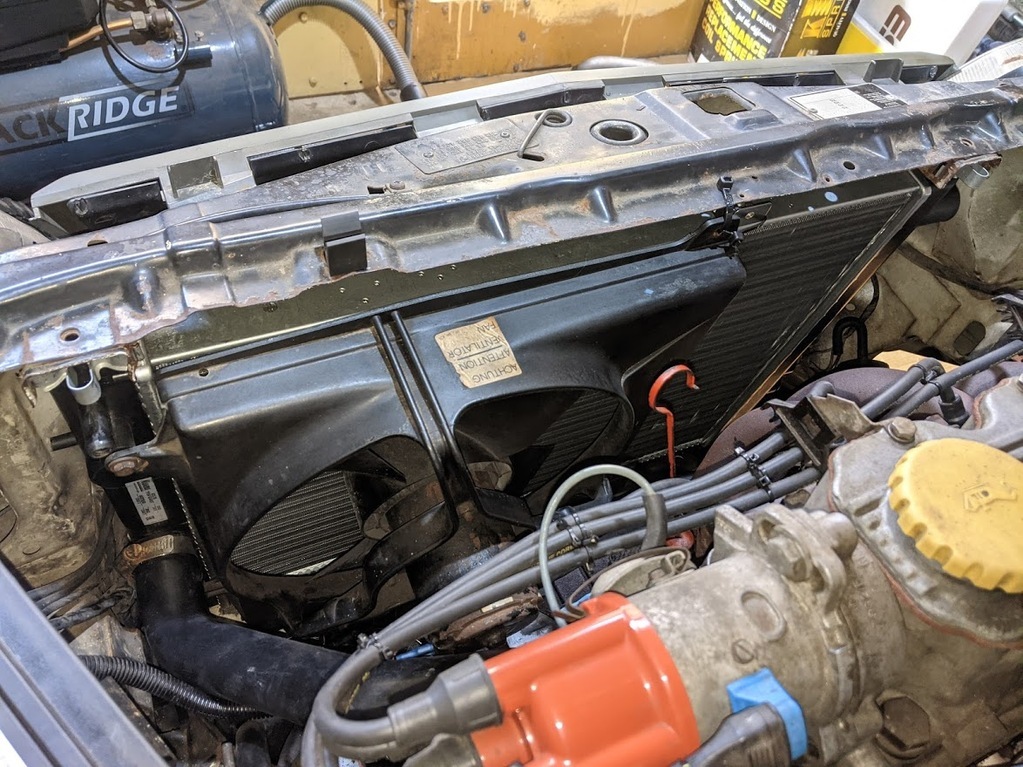
I'm also trying to change out as many of the cooling system hoses as possible as most of them are either original or hashed up from non-standard offcuts like this one:

I've changed the ones which were easily accessible for now but there's a bit of a web of smaller hoses behind the engine block which I don't think I'll easily be able to access without removing the inlet manifold. As I wanted to use the car the next day I decided to leave these for later. None appeared to be dangerously perished so its not hugely urgent at this stage but I'll still get it done soon for peace of mind.
I chucked in a new thermostat whilst the system was drained and made sure everything was buttoned up correctly before refilling the system. I ran the car up to temperature on the driveway and confirmed that the cooling fan cut in correctly at about 3/4 on the gauge. Once it had cooled back down overnight I topped up the header tank and it was good to go.
The car made it to McLaren Vale the next day for the Vintage & Classic show - although its slightly battered exterior and lowly J-car status meant it looked slightly out of place amongst most of the other vehicles:
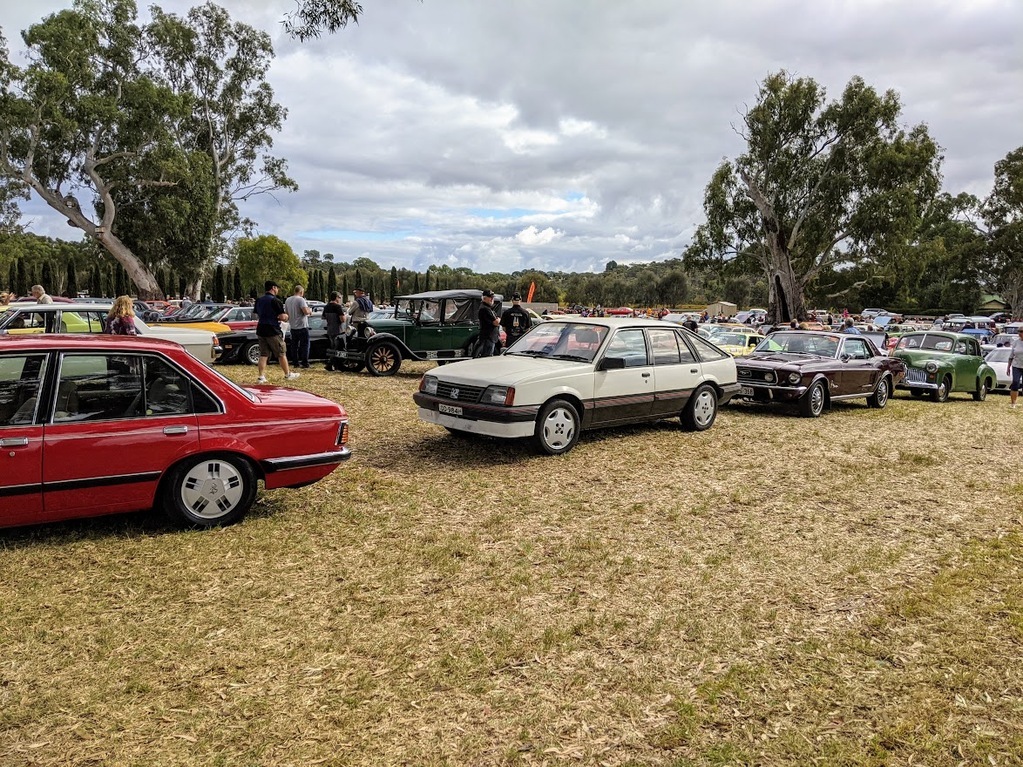
I was really happy with the way it drove on the way down - it didn't really miss a beat. However, towards the end of the run it felt like it was running just a little bit lumpy. This made me paranoid that the newly-installed cambelt had jumped a tooth so ended up stripping it back down again in the car park of a friendly coffee roastery to check it before driving it back home:
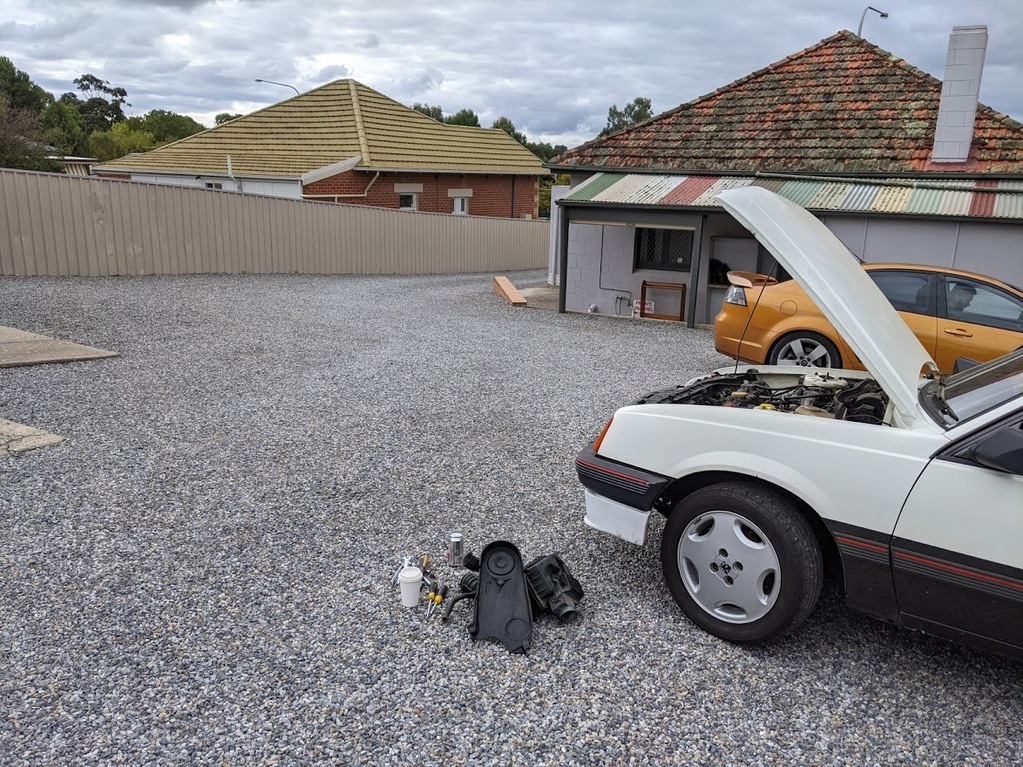
I needn't have worried - the belt was fine but I did find a small split in the air intake hose which wouldn't have helped the running. I patched it up with some tape from a servo and it drove home beautifully again. I'm pretty sure the air intake hose should be interchangeable with the 1.8 Camira so I'll keep an eye out at the wreckers and grab a good one when I get the chance.





























